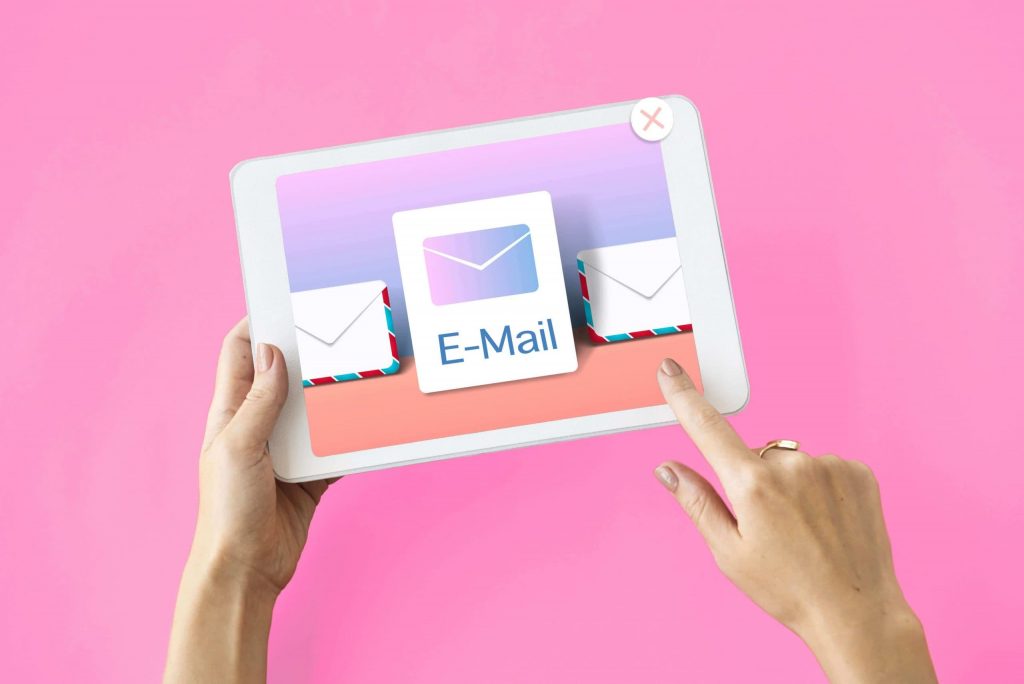5 Mistakes To Avoid In Your Email Marketing Campaigns
After 41 years of emails, a lot of businesses are starting to think that sending them is a dead practice. But the fact of the matter is email has consistently been recognized as one of the best and most beneficial ways a business can directly contact their tribe of followers and customers. Even today, email marketing offers the highest return on investment in the digital marketing world – if you’re doing it right. If you are not ready to outsource to a full-service email marketing agency, we are going to share some of today’s email best practices.
Time and effort must be invested to develop a thorough and effective email strategy, and even once you think you’ve got it all figured out, the trends change, and you’ve got to rethink your approach all over again.
The truth is, while it can be wildly successful, email marketing isn’t for the faint of heart. But if you can avoid making these 5 common email marketing blunders you can increase your open rate, as well as the odds of converting each potential customer into a sale.
1. Using an Outdated Mailing List
With the EU’s new data privacy law, GDPR, going into effect in May 2018, it has become even more important that you stay up-to-date with your email list. While it has always been important to manage your list and avoid sending emails to contacts who have unsubscribed, doing so now violates international spam laws – and could be a costly mistake for a small business. Make sure that you maintain a positive email reputation and only send emails to contacts who have explicitly opted-in to your email messaging.
What’s more, you must also remove contacts from your growing list of email subscribers if they regularly “bounce,” or don’t make it to your recipient’s inbox. There are a number of reasons emails can bounce, including:
- The recipient’s email is misspelled, and therefore not active at all.
- That inbox is full.
- Their email address is inactive.
This is a best practice for email marketing because campaign emails that regularly bounce can affect your deliverability rates, which can in turn impact your email reputation.
2. Failing to Use Segmentation
Sending out a general email to your entire email list can, on rare occasions, be justified – for example, if it’s a routine update that is suitable for all your subscribers. But if you’re constantly sending the same email to every person on your list, you should stop right now! Just having a massive list of emails isn’t enough anymore; you want to segment your list by characteristics like geographic location, income, gender, past purchases, and so on.
Of course, you can’t simply ask for this information upfront – in this age of privacy breaches and data leaks, you’ll likely scare away any potential subscribers with your bluntness. Besides, you only need an email address to sign up as a reader. It’s a good idea to collect this information through surveys, on-site forms, and other creative means.
Segmenting your email lists will help you grow your contacts into laser-focused, like-minded groups. This will, in turn, allow you to create messages that will resonate with each segment, encouraging them to actually open and read your emails. In fact, by tailoring your emailing campaigns to the wants and needs of your different segments. You can improve your click-through rates and contribute to a more successful campaign.
3. Sending Filler Emails
Constancy in the timing of your email marketing campaigns is important. For that reason, you’ve probably fallen into the trap of sending out the occasional email without a clear purpose.
Here’s how the scenario usually plays out:
- You start your email marketing efforts, and in a few days, you’ve already got a couple of subscribers. It feels great!
- You read somewhere that you should send a “welcome message” first, but you’re not sure what to do after that. So, you send out an email or two, and then you have nothing more to say by the third week.
- But you know that staying constant is important, so you throw together a fairly pointless email and hit send.
Without a doubt, your readers will see through this little gambit and start leaving. Every email should serve a purpose, otherwise, you’re just needlessly cluttering up your subscribers’ inboxes. Messages with no clear purpose can lead to drops in engagement and a rise in unsubscribe rates.
You must make sure that you make the purpose of each email easy, clear, and obvious for your readers to follow through on. Whether you want them to make a purchase, or follow your business on social media, make sure there is a clear call to action for it.
4. Using Email Subject Lines Poorly
The subject line is a major player when comes to getting people to actually open and click on something inside your emails. Depending on how you write your subject line, it will either catch your recipients’ attention or will be entirely ignored – which is disastrous for any email campaign.
Unfortunately, there is no tried and true equation that works for every industry or business. But there are a few easy rules that you should follow to improve your email open:
- Keep your subject lines factual – don’t mislead your readers.
- Don’t give everything away. Just pique their interests, so they are motivated to click and see what you have to say.
- Put your keywords at the beginning. Many of your recipients will read your message on their mobile devices, so keep in mind that the subject line may be cropped.
5. Ignoring Mobile Devices
For a very long time, email opening was the exclusive job of desktop computers. Not anymore – last year, over 47% of all emails were opened on smartphones, and a recent study of Millennials found that they check their phones 150 times a day! If you’ve chosen not to optimize your emails for mobile devices, you’re missing out on substantial opportunities. Many people will delete a message out of hand if they can’t properly see it on their phone.
Not only does this mean responsive and mobile-friendly emails, but also a mobile-friendly landing page. You must craft an entire mobile-friendly customer experience, from opening your email to following through on your call to action. Whether that’s making a purchase, submitting information, following your business on social, or what-have-you.
Moreover, it’s wise to invest time in testing how your emails look on as wide a variety of devices as possible. Only send out your campaign once you are sure it looks great wherever it’s opened.
In Conclusion
It’s easy to make mistakes, and these are just some of the more common mistakes that you can make. There is a bit of a learning curve with email marketing best practices, and almost every business has made a few of them while learning and experimenting with what works and what doesn’t.
The good news is that while these mistakes can be costly, they can be easily fixed for far more email marketing success. Take note of these email marketing tips and pitfalls, modify your approach and practice. You can change your email marketing blunders into successes!
If your business is looking to capitalize on the opportunities that can be found with email marketing, working with a full-service email marketing agency in Toronto is the way to go. Consider partnering with our team at Asset Digital Communications. Our full-service email marketing includes list building, drip campaigns, email nurture campaigns, email analytics, and content creation for B2B. Studies show that the average return on email marketing is $38 for every $1 invested – that’s nearly 4000%! Can you afford to leave that on the table?
Book a call with us today and start generating more leads and increasing your sales!




